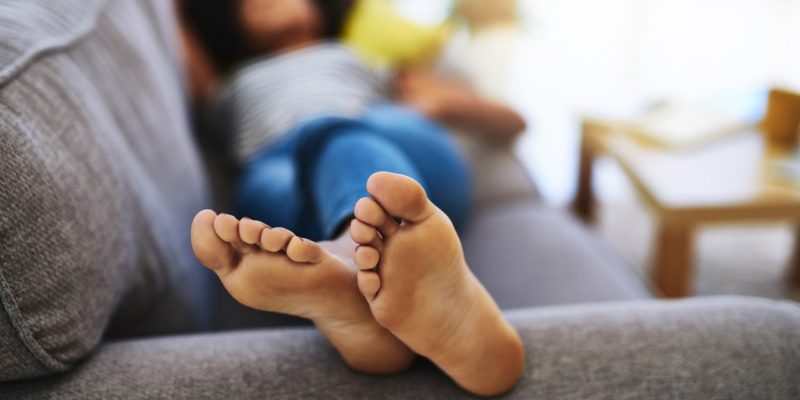How to Treat Bunions to Prevent as Much Pain as Possible
In sum, “if left unaddressed, a bunion can lead to other problems such as hammertoes, other second toe deformities like a ‘crossover’ toe, and mid-foot arthritis,” Cody says. “You may also get more pain under the ball of your foot.”
What causes bunions to form?
Experts actually disagree on what causes bunion — specifically, whether or not it can be truly caused by wearing tight, overly narrow, or high-heel shoes. But we do know that bunions are more common in women. So, most likely, it a combination of factors can lead to the development of bunions. “It is usually genetic in nature but is exacerbated by shoe wear,” Weinfeld says.
One thing is certain: “Bunions that are left untreated usually progress over time,” Weinfeld explains. So, if you start to feel any joint pain or notice a bump beginning to form, head to an orthopedist ASAP.
What are the symptoms that signal a bunion is starting to form?
Warning signs to look out for include numbness, swelling, aching, redness, and calluses along the outside of your big toe; your big toe crossing underneath your second toe; and/or pain starting to transfer onto your second toe. Of course, the biggest sign is if the joint and bone on the outside of your big toe begin to protrude outwards.
“If you notice that you have a bump over the side of your big toe that is painful and rubs in shoes, you probably have a bunion,” Cody explains. “Your big toe rubbing against your second toe, even when you don’t have shoes on, is another sign.”
How are bunions treated?
The easiest at-home remedies to start with are daily Epsom salt soaks, switching to wider shoes, and wearing sneakers with inserts. If your feet are still in pain after trying all that for a while, go see your doctor. The first line of treatment from there will likely be orthotics. “The nonsurgical treatment for bunion includes shoe wear modifications and orthotics to alleviate pressure over the bony prominence,” Weinfeld explains. “The only way to [truly] correct a bunion is by surgical means.”
If surgery is necessary, it usually involves shaving off the bump itself as well as realignment of the bones of the foot, Weinfeld says. (Ouch.) Sometimes, even if the patient has bunions on both feet, these surgeries are done one foot at a time so the patient can use crutches rather than a wheelchair. Full recovery can take weeks to months.
“The benefit of surgery is that you are changing the structure of the bunion,” Brenner explains. “With conservative care, you are putting a band-aid on the bunion in a sense; you will not take the bump away, just help with the pain of the bunion.”
Some good news: There are some minor lifestyle changes that can help keep bunions at bay, at least a little bit. To prevent them from ever forming in the first place, Cody says that “wearing shoes that give your toes space and don’t squeeze your feet is probably the best thing you can do!”
Now, learn more ways to help keep your feet happy:
Now check out 100 years of foot care:
Follow Allure on Instagram and Twitter, or subscribe to our newsletter for daily beauty stories delivered right to your inbox.

